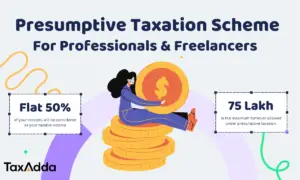GST council had implemented this e-invoicing feature in its 35th meeting which applies to the special category of individuals. Many people misunderstood this term as generation of invoice on GST portal but this is not so. E-invoice is a process of submission of already generated invoices on an e-invoice portal.
E-Invoicing in detail is the system that authenticates B2B invoices electronically for further use of such invoices on the GST portal. A unique identification number will be issued on the E-invoicing portal to every invoice which will be further used by the GST portal. You can say all information will be transferred to GST and E-way bill portal from E-invoicing portal that further eliminates the need for manual data entry while filing GST returns and generating e-way bills.
E-invoice cannot be canceled partially. If you want to cancel it, you need to cancel it completely and reported it within 24 hours into IRN. The manual cancellation is required thereafter on the GST portal and it should be done before the filing of returns. The invoices cannot be uploaded in bulk into IRP. It must be uploaded one at a time. The documents that need to be reported into IRP are Invoices by the supplier, credit notes, debit notes, and all other documents prescribed under GST law to be reported as an e-invoice.
You can use Online GST Billing Software by TaxAdda for creating GST invoices in easy way.
E-Invoicing applicability
If your business turnover is more than 50 crores during any of the preceding financial years from 2017-18 onwards, e-invoicing applies to your business. The limit was 500 crores initially which further changed to 100 crores and now this limit has been finalized at 50 crores. However, there are certain categories of business where E-invoicing is not applicable irrespective of the turnover limit. Following are the business categories:
- Goods Transport Agency
- SEZ unit
- Government department and Local authority
- Banking companies or insurers or financial institutions including NBFC
- Passenger transportation service
- Services provided in multiplex related to Exhibition of cinematographic films
Stages of raising an E-invoice
Accounting software used in your business must generate invoices using the PEPPOL standard. It is a globally used standard that allows a single point of data entry in e-commerce businesses. E-invoice generated under GSTN includes following parts:
- E-invoice schema: It includes a description and technical name of the field, along with few sample values and explanatory notes. It also explains whether the field is mandatory or not.
- Masters: Masters include various fields such as supply type, UQC, invoice type, State code, etc. that are pre-defined by GSTN.
- E-invoice template: It is designed as per defined rules of GST. The green color is marked to the fields that are mandatory and the yellow color is marked to the optional fields.
The process through which E-invoice is generated needs to be understood clearly. Let’s discuss all the stages of raising an E-invoice one by one:
- Firstly it is to be ensured that taxpayer is using reconfigured ERP system under PEPPOL standard. A standard set of e-invoicing can be incorporated by software providers along with mandatory parameters as prescribed by CBIC.
- There are two options available for IRN generation. The first one is direct API integration or integration using GST Suvidha Provider. For this integration, the IP address of the computer system needs to be whitelisted on the portal of E-invoice. The second option is using the Bulk generation tool. You can download this tool and upload the invoices in bulk. Further, a JSON file will be created that can be directly uploaded on the E-invoice portal that further gives you the bulk IRNs.
- Now the invoice will be raised normally on the software by the taxpayer with all mandatory details such as transaction value, billing name, and address, tax amount, etc.
- The invoice with all mandatory details will be uploaded to IRP through direct API, or GSP, or using a JSON file. IRP will be responsible for E-invoicing and its authenticity as a central registrar.
- The key details of all B2B invoices will be verified by IRP. It will also check for duplicates and finally generates an Invoice Reference Number. The parameters based on which IRN is generated include the GSTIN of the seller, document type, financial year in the prescribed format, and invoice number.
- After the generation of IRN, the invoice is digitally signed by IRP, and a QR code is created. At the same time, an intimation of the generation of E-invoice will be sent through email to the seller of the supply.
- The further authenticated payload will be forwarded to the GST portal and other relevant details to the e-way bill portal. The seller part of GSTR-1 will get auto-filled and tax liability will be determined for the relevant tax period.
Mandatory fields of E-invoice
GST invoicing rules must have adhered to while issuing E-invoice. There is certain information that is mandatory for every business but certain information is optional. Following are the fields that are mandatory to be declared in E-invoice:
- Document Type code, number, and date
- Supplier’s Legal name, GSTIN, Address, Place, State Code, Pin Code.
- Recipient’s legal name, GSTIN, Address, State Code, Place of supply, Place, Pin code
- Preceding invoice reference number, Current Invoice reference number
- Shipping and dispatch details
- Item Description, HSN Code, Price, Assessable value, Invoice Value, GST rate
Is E-Invoicing beneficial?
Yes, E-Invoicing is very beneficial to every business. Let’s discuss its benefits in detail:
- Data under GSTR-1 will be ready at the timing of filing return if the E-invoicing system is followed
- Generation of E-way bills becomes easy using data filled under the E-invoicing system.
- Frauds will be reduced as tax authorities will have real access to all the data. Also, there will be no fake GST invoices
- Data reconciliation is less required between GST returns and books and input tax credit verification issues will also be reduced
- Only one-time reporting of B2B invoices is required. There is no need of reporting in multiple formats.
E-Invoicing if applicable must be followed properly. It will reduce a lot’s effort and time of the taxpayer. All the data will be reconciled automatically and auto-filled on all portals.

